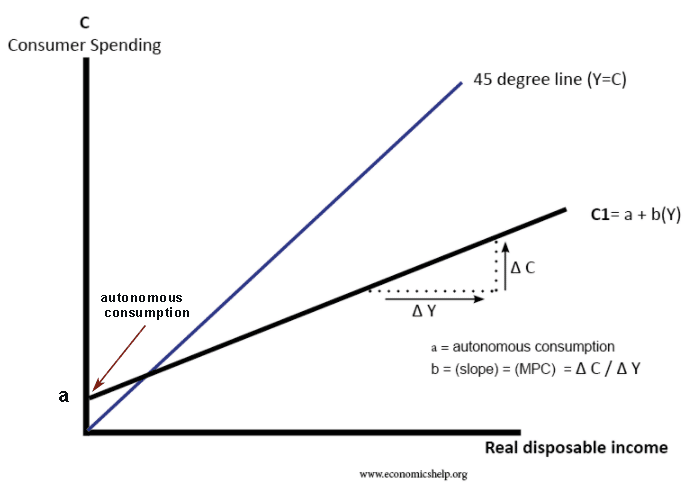Definition of autonomous consumption: This is the level of consumption which does not depend on income. The argument is that even with zero income you still need to buy enough food to eat – either through borrowing or running down savings.
Autonomous consumption in the Keynesian model
In the Keynesian model of aggregate expenditure, autonomous consumption plays an important role.
C = a +bY. In this formula a is the level of autonomous consumption, where b is the marginal propensity to consume out of income.
What determines autonomous consumption?
The level of autonomous consumption depends upon:
- Assets such as houses – with assets, people can gain equity withdrawal – remortgaging the house to take out a loan.
- Expectations of future income. Expected future income gives consumers more confidence to borrow.
- Difficulty/ease of borrowing money to finance the autonomous consumption. Payday loans are often used by people in low-income who want to maintain day to day expenditure.
- Time period. In the short-term, people have commitments to pay bills so autonomous consumption is quite high. However, if the period of no income persists, individuals will ‘downsize’ – ending phone contracts, move to cheaper accommodation, and every trying to grow your own vegetables.
- Levels of saving
- Minimum standards of living and ideas of absolute poverty.
Induced consumption
This is consumption that is influenced by levels of income. With rising income, people can spend more. In the diagram above, induced consumption is given by formula b(Y) where b equals the marginal propensity to consume
Related

